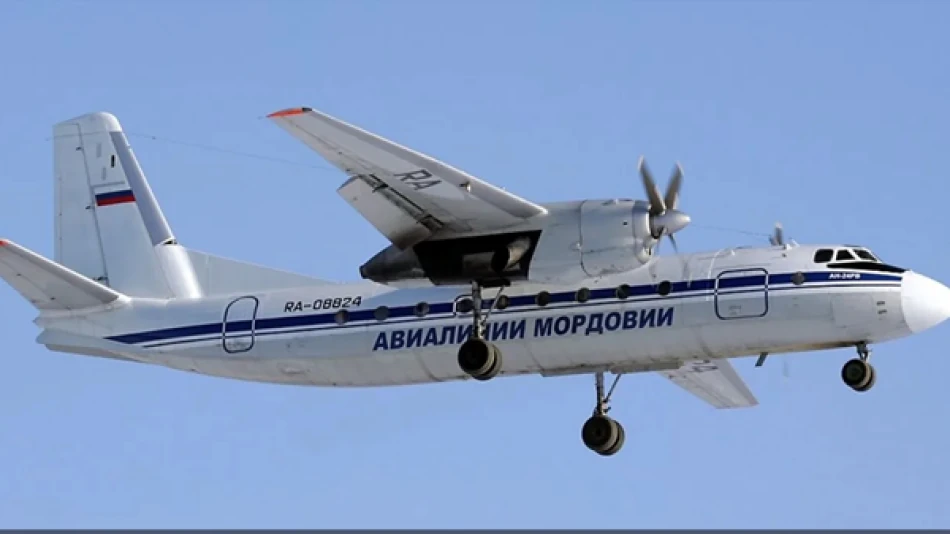
Russian Passenger Plane Vanishes: Mysterious Disappearance Shocks Aviation World
Russian Passenger Plane Carrying 50 People Goes Missing Over Remote Eastern Region
Russian aviation authorities have lost contact with a civilian passenger aircraft carrying approximately 50 people in the remote Amur region of far eastern Russia, according to reports from Russian news agency Interfax and local media outlets. The AN-24 aircraft disappeared from radar contact, with its exact location and fate remaining unknown as search operations likely commence in one of Russia's most challenging terrains.
The Disappearance
The missing aircraft is an Antonov AN-24, a Soviet-era twin-engine turboprop that has been a workhorse of regional aviation across former Soviet states for decades. These aircraft typically operate short to medium-haul routes connecting remote communities with major urban centers, making them vital lifelines in Russia's vast eastern territories.
The Amur region, where contact was lost, spans over 360,000 square kilometers of largely wilderness terrain along Russia's border with China. The area's harsh geography, including dense forests, mountain ranges, and extreme weather conditions, historically complicates both aviation operations and search-and-rescue efforts.
Aviation Safety Concerns in Russia's Far East
Aging Fleet Challenges
The incident highlights ongoing concerns about Russia's regional aviation infrastructure, particularly the continued reliance on Soviet-era aircraft like the AN-24. First introduced in the 1960s, these planes remain in service across Russia due to their reliability in harsh conditions and ability to operate from shorter, less-developed airstrips that modern aircraft cannot access.
However, the aging fleet presents maintenance challenges, especially as international sanctions have complicated access to spare parts and modern avionics systems. This has forced Russian operators to rely increasingly on domestic maintenance capabilities and older navigation equipment.
Geographic and Weather Factors
Eastern Russia's aviation network faces unique challenges that distinguish it from other remote regions globally. Unlike Alaska's bush flying operations or Australia's outback routes, Russian far east aviation must contend with some of the world's most extreme winter conditions, limited infrastructure, and vast distances between emergency landing sites.
The region's communication infrastructure also lags behind western Russia, potentially complicating real-time tracking and emergency response coordination when incidents occur.
Search and Rescue Implications
If confirmed as a crash, this incident would trigger one of Russia's most challenging search operations. The Amur region's terrain requires specialized equipment and personnel, often involving military assets due to the remote location and harsh conditions.
Previous aviation incidents in similar Russian territories have demonstrated both the difficulties of locating downed aircraft and the remarkable survival stories that can emerge from such crashes, particularly when pilots manage controlled landings in forested areas that provide some protection from the elements.
Broader Context for Russian Aviation
This disappearance occurs as Russian aviation faces increasing isolation from international safety and maintenance networks due to ongoing geopolitical tensions. The country's domestic aviation industry has been forced to accelerate self-reliance initiatives, including expanded domestic aircraft production and maintenance capabilities.
For remote communities in eastern Russia, incidents like this underscore their continued dependence on aging aircraft for essential connectivity. Unlike urban areas with multiple transportation options, these communities rely heavily on aviation for medical emergencies, supply deliveries, and basic mobility—making flight safety a critical infrastructure issue rather than merely a commercial concern.
Most Viewed News

 Layla Al Mansoori
Layla Al Mansoori






